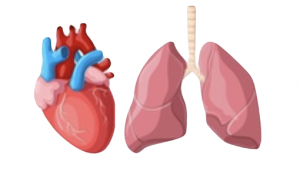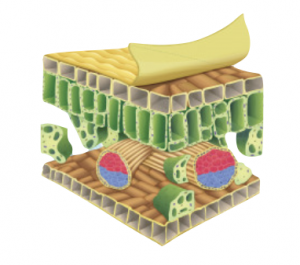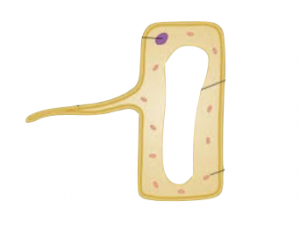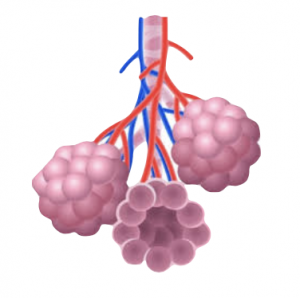General Features of Exchange Surfaces (A-level Biology)
General Features of Exchange Surfaces
Exchange Surfaces
The Need For Exchange Surfaces
Organisms need to supply substances such as glucose and oxygen to each of its cells and remove waste products, and processes within the body help to make this more efficient:
- Small organisms use diffusion for gas exchange. As single-celled organisms are able to diffuse substances directly in and out across the cell surface membrane, the diffusion rate is quick due to the small distance needed to travel. The surface area to volume ratio is high.
- Multicellular organisms cannot rely on simple diffusion. In contrast, multicellular organisms have a larger distance for substances to travel, meaning specialised exchange surfaces are required. The surface area to volume ratio is low and the demand for substances is high.
- Large organisms have specialised exchange systems. The mass transport system allows all substances to travel in the same direction at the same speed around the body, where nutrients can enter cells and waste products leave cells.
Examples of Mass Transport Systems
An example of a mass transport system in animals is the circulatory system, which transports substances such as glucose, oxygen, hormones, antibodies and waste around the body via the blood.

An example of mass transport in plants is the vascular system, where a supply of water and solutes is transported to the leaves via xylem tissue and food is pulled from the leave to move to all areas of the plant via phloem tissue.

Exchange Surface Features
Large Surface Area
- Root Hair Cells – many of these cells grow on plant’s roots covering them completely. They help to give a large surface area, increasing the rate of absorption of water (osmosis) and mineral ions (active transport) from the soil.

Thin
- Alveoli – these are located in the lungs in order for gas exchange to take place. Each individual alveolus is a single layer of thin and flat cells which are known as the ‘alveolar epithelium’. Due to the the cells being thin, the diffusion distance is very small, increasing the rate of diffusion.

Good Blood Supply / Concentration Gradient
- Alveoli – due to being surrounded by a capillary network, there is a constant process of oxygen being taken out and carbon dioxide being brought in of each of the alveolus, meaning the lungs are well ventilated, helping to maintain the concentration gradient of O2 and CO2.
- Gills (Fish) – this is where gas exchange takes place in fish. The fish’s blood and the water surrounding it are constantly exchanging O2 and CO2. As gills have a large capillary network, they have a sufficient supply of blood. Due to fresh water passing over the gills, they are also well ventilated, helping to maintain an oxygen concentration gradient, increasing the rate of diffusion.

Exchange surfaces are specialized structures in the body that allow for the exchange of materials between the body and the environment. This can include the lungs, the gut, and the skin.
The main purpose of exchange surfaces is to allow the body to take in oxygen and nutrients from the environment, and to eliminate waste products. They also play a role in regulating the body temperature.
The key features of exchange surfaces include a large surface area to volume ratio, a moist surface for efficient exchange, and a close proximity to blood vessels to allow for quick transport of materials.
The surface area to volume ratio is important for exchange surfaces because it determines how efficiently materials can be exchanged. A larger surface area allows for more exchange to occur, while a smaller volume means that materials can diffuse quickly to their target locations.
Moist surfaces are important for exchange surfaces because they allow for efficient exchange of gases and other materials. This is because moisture increases the surface tension, making it easier for materials to diffuse across the surface.
The proximity to blood vessels is important for exchange surfaces because it allows for the quick transport of materials to and from the body. This helps to ensure that the body is able to get the oxygen and nutrients it needs, and to eliminate waste products, in a timely manner.
Some examples of exchange surfaces in the body include the lungs, the gut, and the skin. Each of these surfaces has specific structures that allow for efficient exchange of materials.
The structure of exchange surfaces allows for efficient exchange by providing a large surface area, a moist surface, and a close proximity to blood vessels. This combination of features ensures that materials can diffuse quickly and effectively across the surface.
Exchange surfaces play a role in regulating the body temperature by controlling the amount of heat that is lost or gained. For example, the skin acts as a barrier to prevent heat loss, while the blood vessels in the skin help to distribute heat throughout the body.
As an organism grows, its exchange surfaces may change in size and structure. For example, the surface area of the lungs may increase, allowing for more efficient exchange of oxygen, while the surface area of the skin may decrease, reducing the amount of heat lost from the body.





Still got a question? Leave a comment
Leave a comment